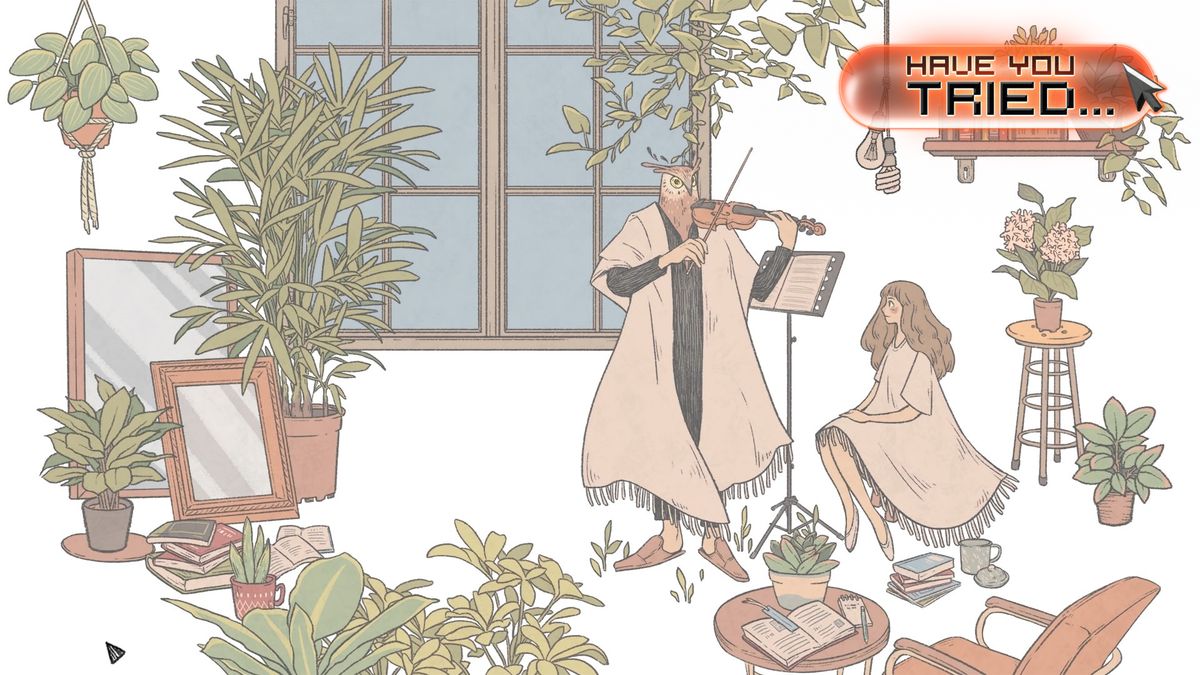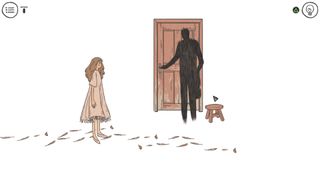Have you tried… learning to let go in the musically magic When the Past was Around?
Fall in love with the moving, gorgeously hand-drawn point-and-click puzzler

Learning to let go of your past and move on can be a very hard thing to do. When something or someone has made such an impact on your life, it's all too easy to feel lost in the absence of it or them. In When the Past was Around, protagonist Eda sets out on a journey to learn how to overcome her past and discover herself again. The style of When the Past was Around is what first drew me to it; it's hard not to find the gorgeous hand-drawn art by Indonesian artist Brigitta Rena utterly enchanting. Once I start playing, I begin to see just how well the illustrations speak for themselves by so beautifully conveying the emotions of Eda and translating them to you without the need for words.
If you enjoyed games such as Florence from developer Mountains, which also tells its story through illustrative puzzles, When the Past was Around could just be for you. With no dialogue, Eda's heartfelt story is told through the gorgeously whimsical illustrations of her fragmented memories. Taking place in different rooms and locations at different points in her life, developer Mojiken's indie delight draws you into a uniquely touching, bittersweet experience that I can't help but be deeply moved by.
Opening a door to the past

With a surreal and somewhat abstract feel, it all begins in front of a birdcage with a shadowy figure inside of it. A trail of feathers is strewn on the floor as if to guide you like a path. After interacting with the cage, the bars disappear, and the mysterious silhouette stands in front of a door, holding the handle as if to lead Eda forward. By facing this figure, it's clear that Eda is literally and figuratively opening up a door to her past, and all of the joy, pain, and love that comes with it.
After following this mystery person, I find myself in a somewhat bare room with boxes on the floor, shoes resting on a rug, and a single lone desk and chair. Most importantly, though, Eda is shown holding the hand of this shadow to show that the figure is intimately connected to her. As a point-and-click puzzle game where you have to search for hidden items, you can interact with any number of objects in each memory. The puzzles do get slightly more challenging as you move through each memory. Some items will help you open something that's locked, such as a door or draw, while others will help you access other objects or uncover secret codes and patterns you need to use to progress to the next area.
Eventually, you'll locate a feather that will move you to the next memory. These feathers also begin to restore the appearance of the silhouetted form. After journeying through a few more memories in the prologue, the figure's appearance is revealed to be Eda's lover, The Owl. While it might seem bizarre at first to see an owl's head sitting on top of the shoulders of a human body, the character feels right at home in the game's imaginative, dreamy world. Even when The Owl isn't directly opening up the door to Eda's past, the way in which the feathers act as a gateway to other memories really impressed upon me just how intrinsically tied they are to her journey and her ability to let go.
That familiar tune






Alongside the feathers, music is a constant thread that pulls you forward throughout When the Past was Around. Music plays a huge part in Eda's life, both personally and in her relationship with The Owl. You learn that the 20-something protagonist grew up playing the violin, and her love of music drew her to The Owl and deepened their bond. Just as objects and smells can take us back to a certain time in our lives, music has that same kind of nostalgic power, and one tune in particular that Eda is drawn to can often be heard in each memory. On occasion, this melody manifests as musical notes that float in the air, and you can interact with them to drive Eda to take a step forward and keep moving on.
Without wanting to spoil too much of the story, the memories you experience are disjointed and out of order and everything will become clearer as you journey through each one. While a lot of the memories are happy ones, which appear to be evoked by the use of soft, warm colors, there are darker memories that effectively express the pain Eda went through by shrouding her in darkness. Sometimes I can struggle to reconcile with something I once loved when I begin to associate it with a painful memory, and that seems to be true for Eda, too. What was once a passion for her has become tied to these memories, and you can see her hesitance to take up the violin throughout her journey.
Sign up to the 12DOVE Newsletter
Weekly digests, tales from the communities you love, and more
I may have been drawn to When the Past was Around for its art style initially, but I'm pleasantly surprised by just how invested I became in Eda's story. When I reach the final moments of the game, I'm left with a warm, bittersweet feeling in my heart and tears in my eyes. If you're after something charming and heartfelt that you can play in an evening, then look no further.
When the Past was Around is out now on Xbox One, PS4, Nintendo Switch, and PC.

I started out writing for the games section of a student-run website as an undergrad, and continued to write about games in my free time during retail and temp jobs for a number of years. Eventually, I earned an MA in magazine journalism at Cardiff University, and soon after got my first official role in the industry as a content editor for Stuff magazine. After writing about all things tech and games-related, I then did a brief stint as a freelancer before I landed my role as a staff writer here at 12DOVE. Now I get to write features, previews, and reviews, and when I'm not doing that, you can usually find me lost in any one of the Dragon Age or Mass Effect games, tucking into another delightful indie, or drinking far too much tea for my own good.
DRM-free store GOG launches a new way for fans to influence which games get preserved "forever," and players are going to bat for Diablo 2, OG Final Fantasy 7, and a pile of cult classics
Palworld developer Pocketpair opened its publishing arm only one week ago, and it's already received 150 pitches: "We're determined to help as many great games get made as possible"
Most Popular



